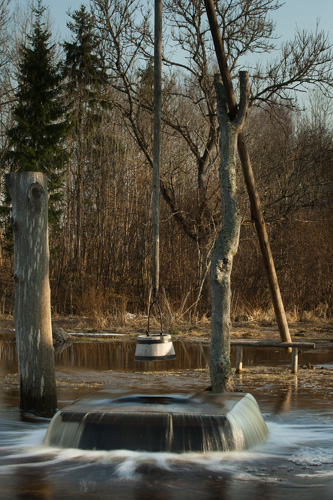The Nabala limestone deposit case - WHAT IS WRONG?
Declaration of Eesti Looduskaitse Selts, the Estonian Society for Nature Conservation
People from 102 countries have submitted more than 60 000 signatures to protect the Nabala karst area. These are the same persons who want to drive on good quality roads and appreciate limestone buildings. They do not oppose mining, but they cannot accept the sacrifice of a unique natural object nor can they accept that irreplaceable natural resources are used up in order to create profit for certain groups. The massive-scale restructuring of nature that is in preparation is terrifying in its probable consequences. The environmental assessment investigations that have been carried out are not reliable. They have not taken in account the fact that this is a karst area, where ordinary investigation and evaluation models are not valid.
Why should people accept that the natural landscape of their homesteads is turned into an industrial landscape when the quarried material actually is not usable on our roads – that is, the goal can only be export. This means that there is no civic interest in the quarry. Why should a new gigantic limestone excavation field be allowed at all when the handling of limestone deposits has been careless to the point of vandalism (the Solaris centre case, quarries that have not been effectively used etc.)?
The precautionary principle that is self-evident for all who care about nature has no place in commercial logics. On the contrary – even if harmful consequences are only too evident, there seems to be no need to take note of them, and the activity is allowed to proceed unhindered until damage can be irrefutably and completely demonstrated. If money has been invested in pre-investigations then results MUST be achieved – with excavators going forward and the product exported, so that no money be lost.
So a basic issue emerges – how can things proceed this far at all? Why cannot it be stipulated immediately at the start that there is no point in wasting time or money, no permission to exploit here will be given? The studies made already in 1988 could not prove that excavation was possible without risking the environment. Why did government not stop the exploiters already in 2005 when it became clear that excavation would bring with it substantial environmental damage? Why has our state allowed itself to be tied up with laws which do not allow it to resolutely order a prohibition in the interest of the public? Why can the authorities provide so little support for the weaker part, human beings in opposition against powerful exploiters with well paid and titled experts in their pay?
The Nabala case sharpens the confidence crisis. People find it more and more difficult to agree even with throughout correctly handled and socially beneficial development.
The opposing views in Nabala are typical:
public interest vs. commercial interests
knowledge vs. opinions
scientific facts vs. biased "truths” from commissioned investigations
declared purpose vs. real purpose
local government in support of its inhabitants vs. a state in the leash of rich exploiters.
Etc.
Up to this day no geological investigation has been undertaken without excavation permit being granted. In the case of Nabala the position of the Minister of the Environment is commendably clear: no permission for exploitation will be given until all possible risks are completely surveyed – but this stand is not supported by law. We look forward to a proposition from the Minister to the government to stop the Nabala mining rights application process.
The Estonian Society for Nature Conservationwants to trust its state and government. From its government it expects an analysis and an initiative to revise the legal basis so that processes similar to the Nabala case will not be allowed to start. No "legally all is correct" schemes or the "justified expectations” – "justified” from some unspecified moment in time - of businessmen can be allowed to stand above public interests such as the preservation of natural values, the value of people’s homesteads, an endurable use of earth resources. When errors are made such as the erroneous inclusion of the Nabala resources into the actively exploitable resources category, responsibility must be assumed and an immediate correction of errors must be made. As a first step the Nabala limestone mineral deposit area must be removed from the mineable reserves category in the development scheme for building material resources for 2010 – 2020. In the total sum of resources, mineable limestone reserves are shown to be sufficient for at least a hundred years even without Nabala.
Accepted at the general meeting of the Estonian Society for Nature Conservation on June 11, 2010.
NB: Read more about the Nabala karst area and the appeal to save Tuhala Witch’s Well http://tuhalanoiakaevuleappi.com/en/









